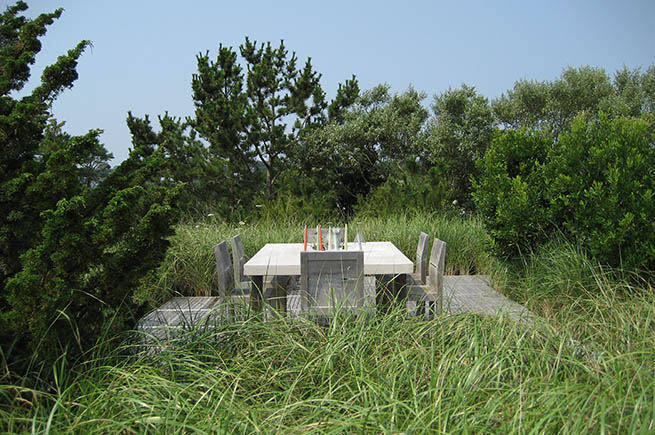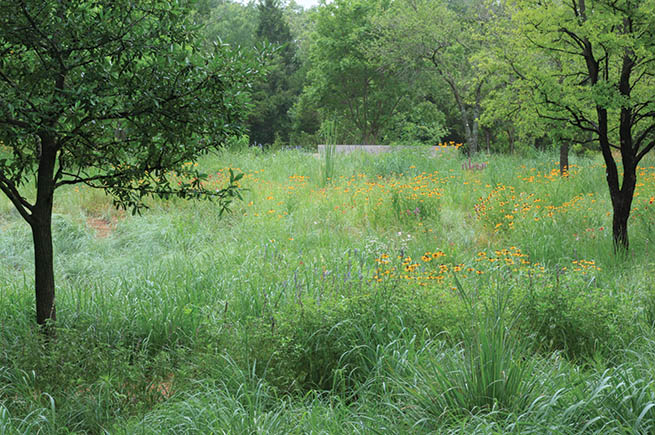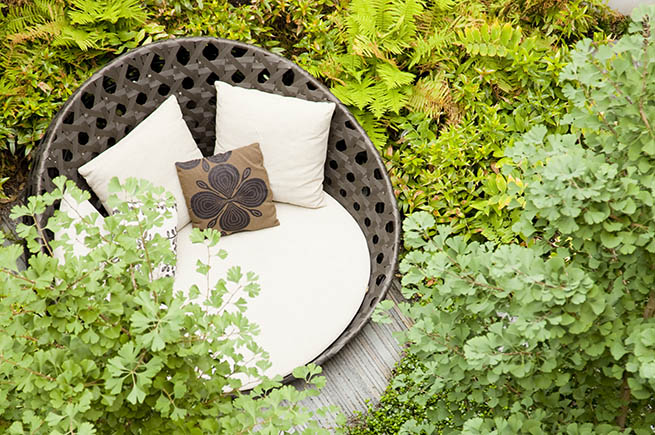Residential Design
5 Reasons Native Plants Help You Save Money and the Planet

2008 ASLA Honor Award, Residential
Design Category, Beach House, Dirtworks / image: Dirtworks
1. Native
plants are healthier and stronger. Plants native to an area are more likely
to establish quickly and will naturally be hardy and healthy. Native plants
have evolved over thousands of years, learning to thrive in particular
areas—they grow in harmony with the environment, the soil, the water supply,
the varying weather throughout all the seasons, and other native companions.
Their root systems are deep, sometimes up to 15 feet, and acclimated to the
soil, be it clay or sand, and average precipitation, whether it is high or low.
Their stems and leaves can handle harsh sun or buffeting winds, for example, if
that is the nature of the local environment. They are also part of a larger
natural ecosystem.
2014 ASLA Honor Award,
Residential Design Category, Hill Country Prospect, Studio Outside Landscape
Architects / image: Arlen Kennedy Photography and Robert Reck Photography
2. Native
plants create wildlife habitat in your backyard. When native plants thrive
in their original environment, they create a natural habitat for wildlife that
is both beneficial to the environment and adds life to your outdoor space. We
think of the obvious pollinators, like bees, birds, and butterflies, but these
plants can also help create homes for small animals, warm and cold-blooded, and
microscopic organisms in the soil. All these living things have jobs to do; the
natural environment promotes a symbiotic relationship.
2013 ASLA Honor Award,
Residential Design Category, Maple Hill Residence by Stephen Stimson Associates
Landscape Architects / image: Charles Mayer Photography
3. Native
plants help the environment. Native plants also have other benefits. They require
much less watering, fertilizer, and pesticides. In fact, they can prevent water
run-off and improve air quality. Native plants can help decrease pollution
because they eliminate the need for mowers and other equipment. Native plants
have the ability to pull and store excess carbon.

2013 ASLA Honor Award,
Residential Design Category, Sonoma Retreat by Aidlin Darling / image: Bruce
Damonte
4. Native
plants are low maintenance. The long-term upkeep of native plants can be
dramatically less costly than turf grass, as well as take less time. The EPA
cites a study of larger properties that estimates that over a 20-year period,
the cumulative cost of maintaining a prairie or a wetland totals $3,000 per
acre versus $20,000 per acre for non-native turf grasses.

2013 ASLA Honor Award,
Residential Design Category, Recovered Modernism: A Landscape Matrix Enriches a
Dallas Hacienda by Reed Hilderbrand LLC / image: Alan Ward
5. Native
plants add splendor to your landscape. Your native garden can be a sculpted
formal space designed with harmony, unity, and interest. Native plants provide
a wealth of colors, textures, varying heights, and bloom times, resulting in a
stunning display over multiple seasons.

ASLA 2011 Honor Award,
Residential Design Category, Carnegie Hill House by Nelson Byrd Woltz Landscape
Architects / image: Eric Piasecki